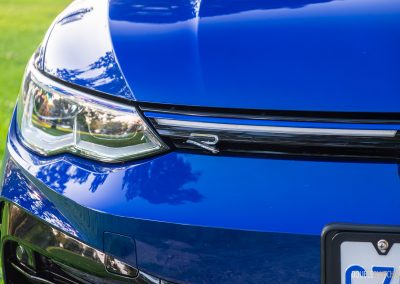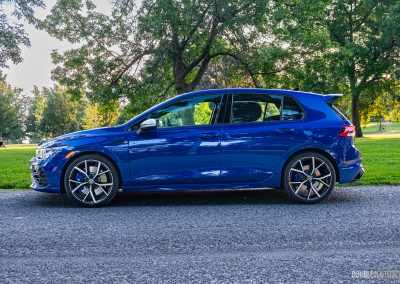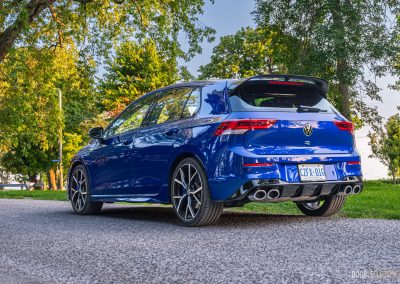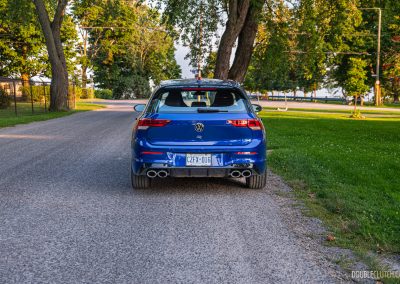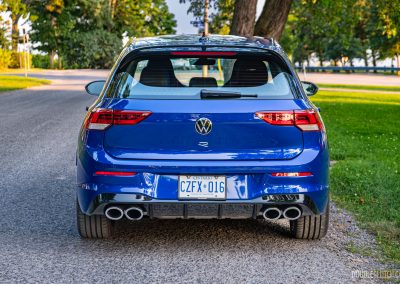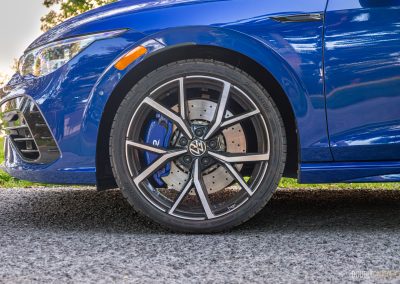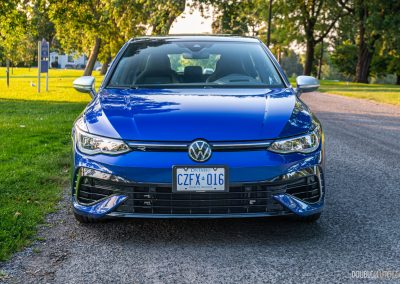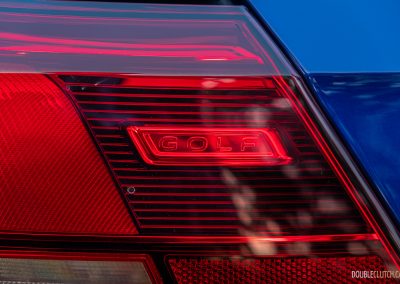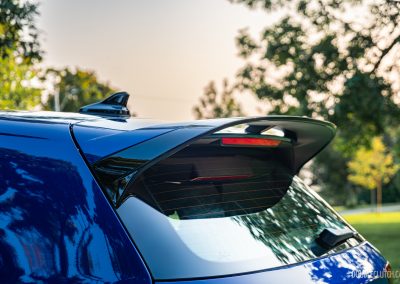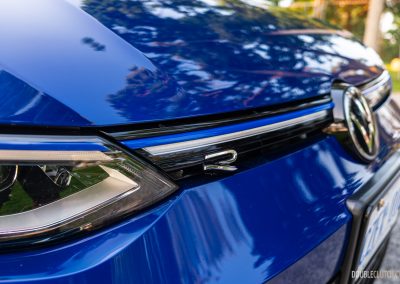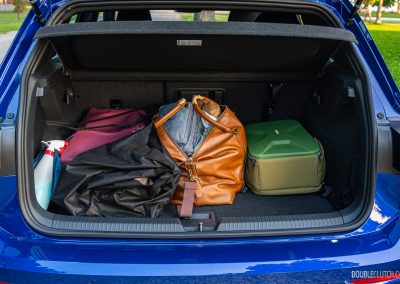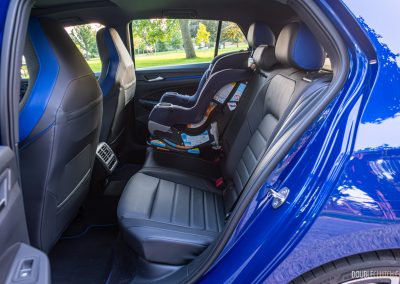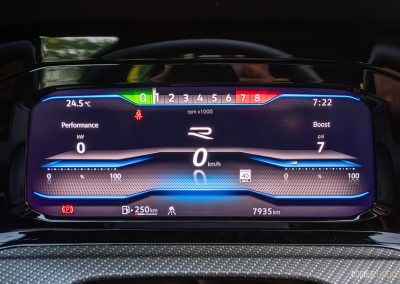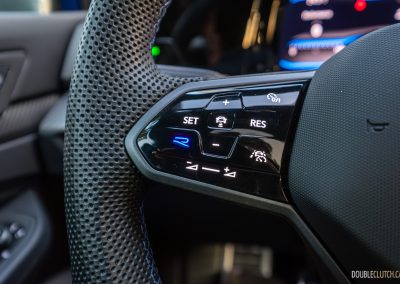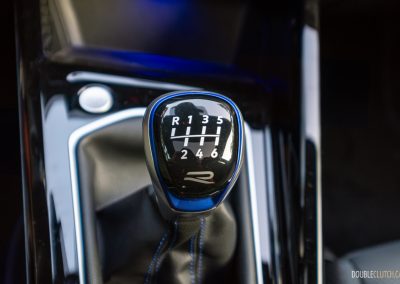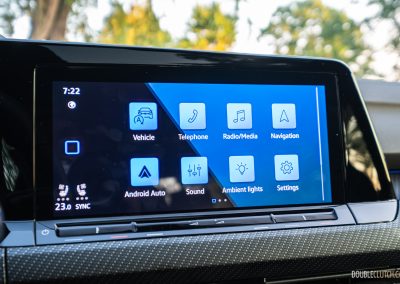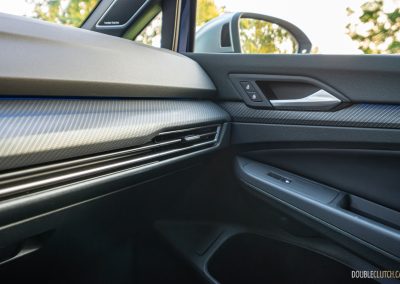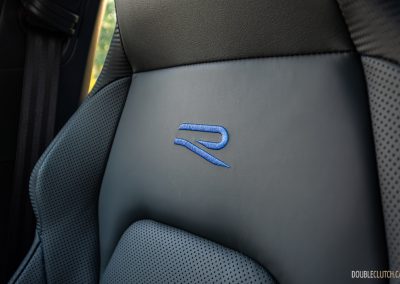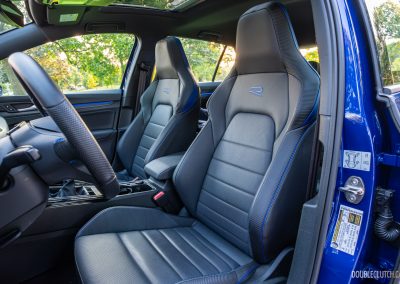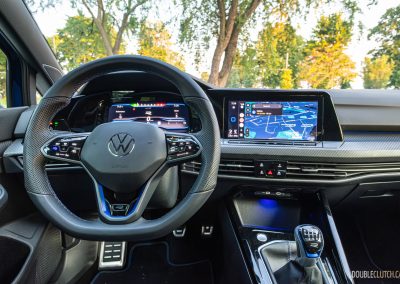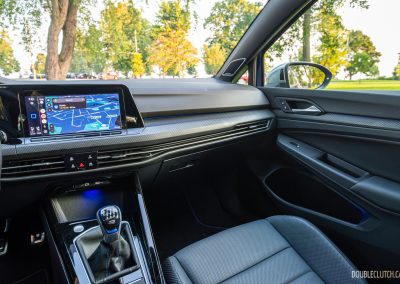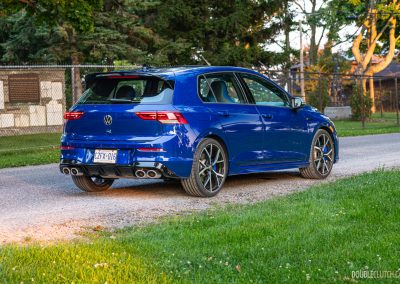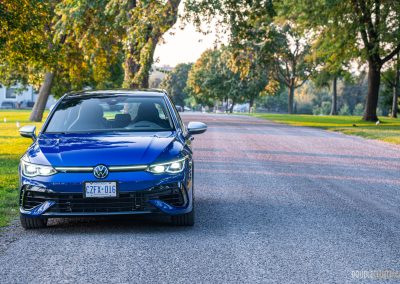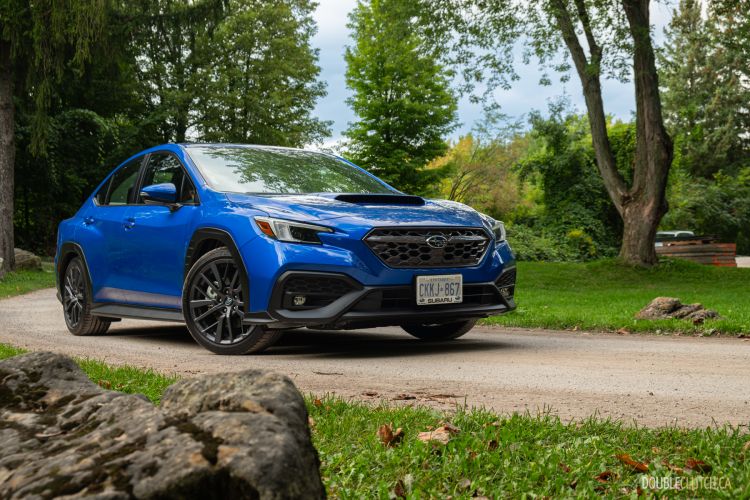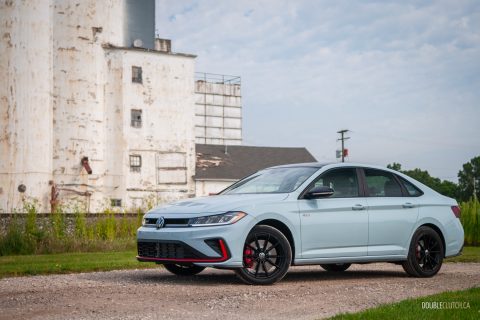Sporty small cars have seen a revival of sorts. The Civic Type R and Integra Type S are back, the Elantra N and Subaru WRX still exist, the Subaru BRZ and Toyota 86 twins are in their second generation, and the GR Corolla is new to the party. Most of these nameplates have been around for quite some time, some are new, and others have returned after a rather long hiatus. Two stalwarts that have never really left the scene for long stretches are VW’s GTI and Golf R, so naturally, I snagged the keys to a 2024 Volkswagen Golf R to see what all the fuss is about.
The Golf R—technically the R32—debuted way back in 2002., so it’s nearing its quarter-century celebration; the GTI is just slightly older, having been born in 1976. This latest version is based on the eighth-generation Golf, which is only available in North America in these two spicy versions. It’s a solid starting point, with prototypical hatchback dimensions, good interior space, and mostly decent build quality. Since their debut in 2022, the GTI and Golf R have attracted criticisms for their use of cheaper materials, touch controls, and general cost-cutting throughout; the 2024 model-year cars don’t change that, unfortunately. But the Golf has always been a playful little thing, and although it can’t officially be credited with creating the segment, the GTI and Golf R have defined the hot hatch segment here in North America for decades.
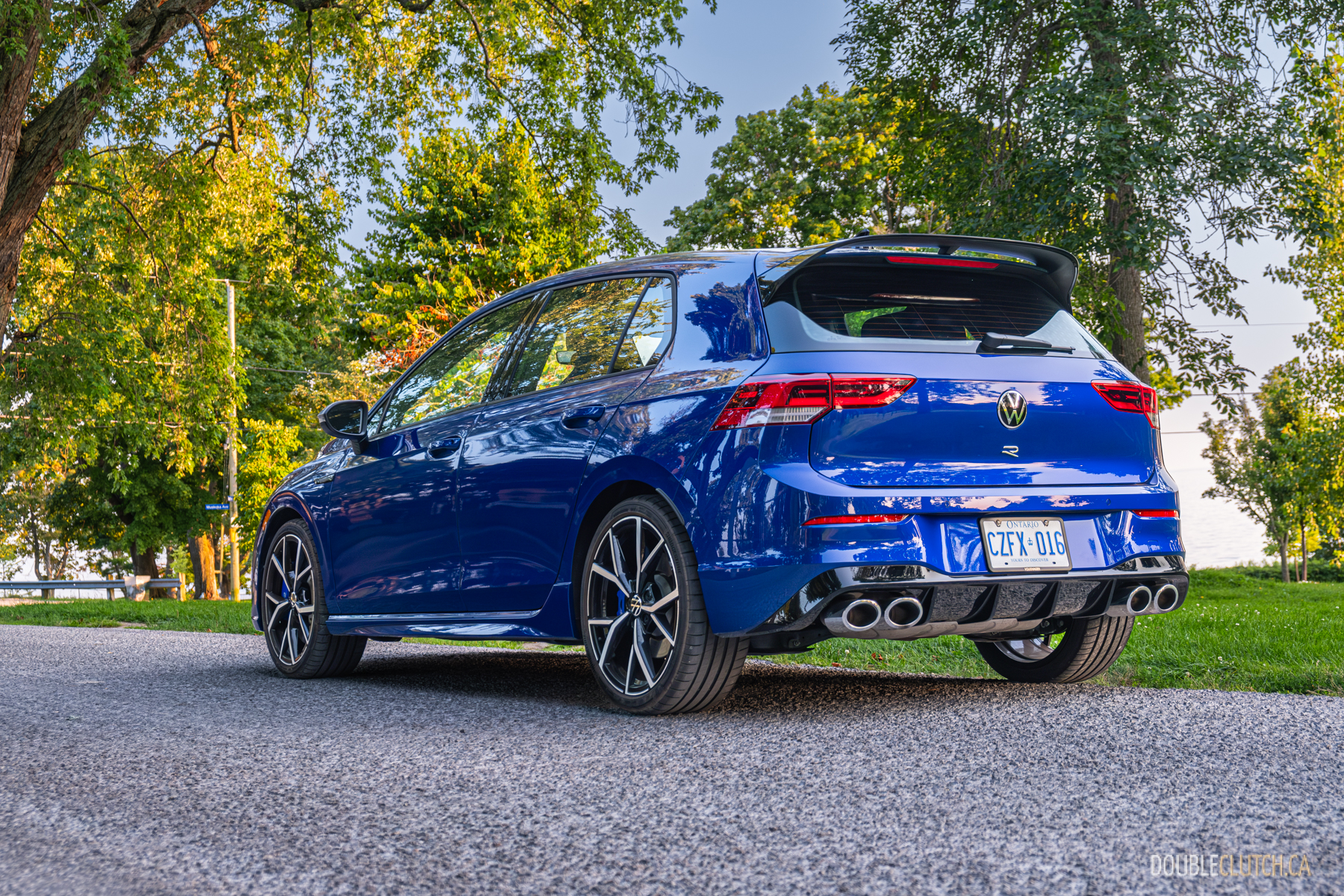
The Golf R specifically is the all-wheel-drive, more performance-oriented, and somehow more mature version of the two. It shares much with the GTI, but keeps the AWD system to itself. Power comes from a 2.0-litre turbocharged four-cylinder engine—the proven EA888—which carries on using an iron block with an aluminum head. Power is a robust 315 ponies at 5,900 rpm, and a decent 280 pound-feet of torque between 1,900 and 5,000 rpm. Our tester has the six-speed manual, which is why we make do with the slightly lower peak torque output, versus 295 lb-ft for the dual-clutch automatic cars. Blame the weak clutch Volkswagen has been using for generations. Not worry, or perhaps you should worry, but the manual and lower torque output will no longer be an option in the refreshed 8.5 series Golf R, we’re going auto only folks.
And you know what? That might not be a bad thing. There’s much to like about the Golf R, but the manual transmission isn’t one of them. It feels rather artificial, almost like you’re playing on a racing sim, with no feel whatsoever through the shifter and a nicely weighted but springy clutch. The plasticky shift knob doesn’t help, either. I previously owned a DSG-equipped MK8 GTI, and despite being firmly in the #SaveTheManuals camp, I prefer the automatic. No tears are being shed here.

The automatic is also significantly quicker as well, and much more robust compared to the manual. Volkswagen says it’s capable of a zero-to-100 km/h run in 4.6 seconds; some have clocked them at 4.2 seconds in the real world, and although the manual’s 4.9-second run is pretty good, the delta is significant. Regardless, both of those numbers are quick, even among its spicy peers, and credit goes to the all-wheel-drive system. Though it’s front-drive-based, it puts the power down much better than most of its competitors, and it feels pretty fast, too. In-gear torque feels fantastic in real world driving, as does the ride quality. The Golf R features an adaptive suspension setup; this isn’t uncommon, but the breadth of the customization is far above any other competitor.
There are 15 different levels of adjustability—yes, 15—to the adaptive dampers. Going from full-soft to full-stiff feels like going from an entry-level luxury sedan to damn near skateboard on the stiffest setting. It’s rather remarkable how much you can vary things from a ride quality and handling perspective, but less impressive is the steering. It feels decently weighted, but similarly lacking in feedback and mechanical feel as the transmission. And speaking of the steering wheel, don’t get me started those touch controls that had me inadvertently turning on the heated steering wheel in the middle of summer. The brakes are upsized as compared to the GTI, with 14-inch front rotors along with bigger calipers. They stop great, and feel progressive and confidence-inspiring in doing so.
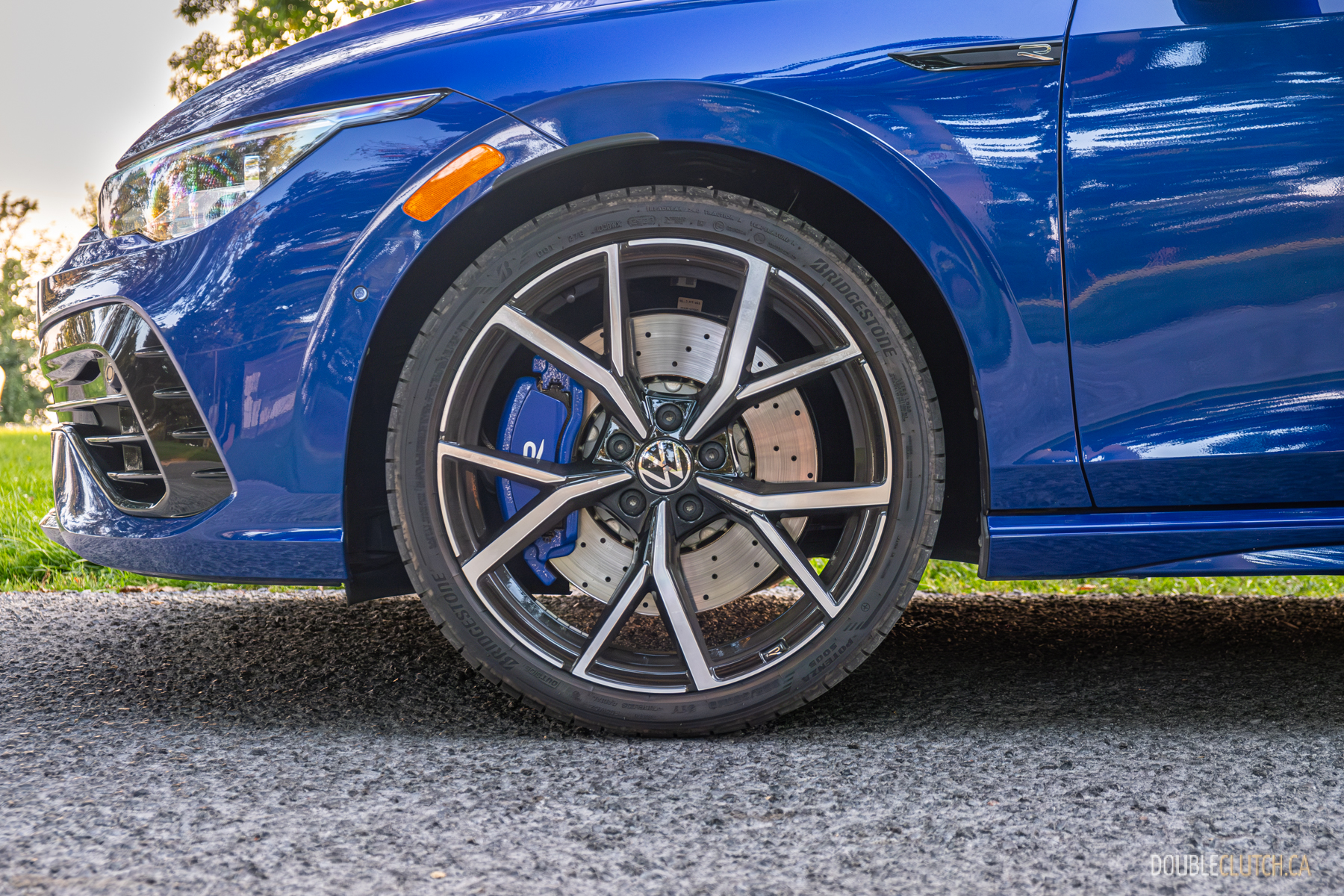
The eighth-generation Golf R does have a neat party trick that one-ups its ancestors: Drift Mode. Unlike previous Golf Rs where understeer was inevitable, the new car has a new rear differential with multi-plate clutches that can send all available rear torque—50% of total power output—to the outside wheel, thereby reducing understeer. Or if you’re really gnarly, inducing some oversteer. You can certainly tell the difference compared to the system operating in any other mode; I found myself preferring the balance of Drift Mode even if I wasn’t completely hooning it.
And despite being a hot hatch, I didn’t find myself driving the Golf R too hard. Yes the manual is a bit unengaging, but it’s a collection of things that make it feel more like an entry-level luxury car than a hot hatch. The suspension is rather compliant, road noise isn’t excessive, the seats are comfortable and leather-wrapped, and the engine is on the quiet side, with the exhaust seldom providing any drama regardless of what mode the valves are in. Yes, the interior materials are a step back from the previous gen and the touch panels are still annoying, but the interior is still a mostly nice place to be. There’s great visibility all around, and the rear seat doesn’t feel cramped because the roofline is straight as an arrow. It’s all very practical.

The downside to this Golf R is that it’s too good of a daily driver to be as spicy as a Civic Type R, Integra Type S, or a GR Corolla. There’s no theatre to be had, but hey, it looks great, especially finished in Lapiz Blue, with satin silver mirror caps—now power-folding for 2024—and rolling on 19-inch wheels. The blue accents differentiating the R from the GTI are unique, eschewing the idea that red denotes the sporty variant. Yet somehow, it all still manages to look mature. You’d think this is maybe a Dr. Jekyll and Mr. Hyde situation, but it isn’t.
It’s more of a buff Dr. Jekyll—capable, competent, even attractive, but not wild or evil. With many other hot hatches offer true split-personalities, I’d prefer if the 2024 Volkswagen Golf R gave me the option to crank it up to 11. But if you prefer tabasco over Carolina reapers, the Golf R may be for you.



